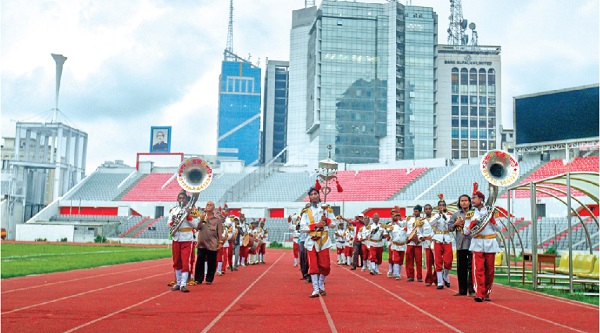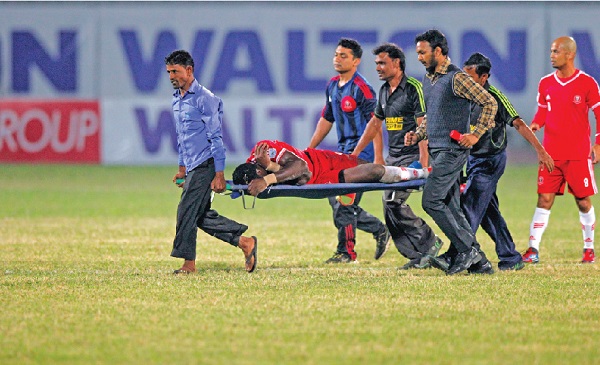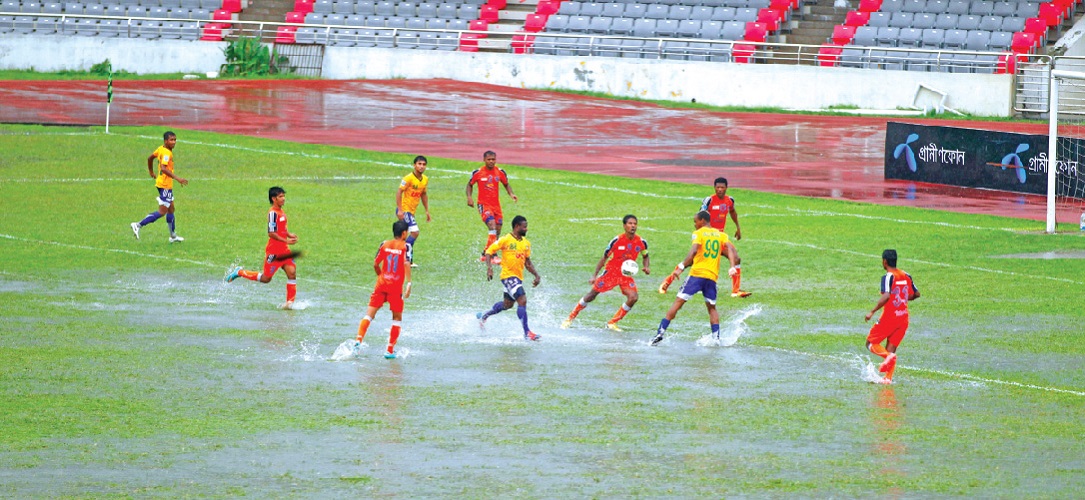By Anisur Rahman
“Football is undoubtedly the most powerful and most popular sport in the world, linking communities, stirring emotions and breaking down cultural barriers. Football has also become one of the most profitable industries, with a significant economic impact in infrastructure development, sponsorships, TV rights and transfers of players.” These words are stated on the official website of Johan Cruyff Institute, and it can give anyone a clear picture of the overall impact of football in society as well as the economy of world football.
Bangladesh is one of the 57 countries where football is routinely voted as the most popular game according to a US-based web portal numbersleuth.org. And the ubiquitous game is played in every single country in the world. It is said that Bangladesh’s cricket is eating all games, including football. But the fact is football is still a popular game in every part of this country albeit losing its past glory.

It was not so long ago when the popularity of the country’s football and the standard of footballers had walked hand-in-hand in a time when there was hardly any big investment in football and Bangladesh also got some international successes. Among them the notables were winning their first international tournament in Myanmar, clinching the SAFF Championship and the gold medal in football event of South Asian Games. And they got them on the back of star footballers that were household names.
But the standard of footballers has dramatically fallen during the last decade or so despite comparatively huge investment in the history of our country’s football and surprising country’s football has still been sliding downward. Bangladesh struggled to overcome the challenges from tiny nations like Bhutan, Nepal, and the Maldives – the countries that were once termed as minnows and beating them was bread and butter for the men in green and red.
With the gradual reduction of the number of quality players following no activities at the grass-root level, Bangladesh has been struggling at the international arena, as they currently sit in the worst position of FIFA ranking (197 out of 206) in the history of Bangladesh football.
But the scenario was supposed to be a different one following the introduction of the professional football league 10 years ago and prolific footballer Kazi Salahuddin’s takeover as the head of the game’s governing body, Bangladesh Football Federation (BFF) in 2008.

Soon after taking the helm at the BFF, Kazi Salahuddin made a positive vibe after roping in corporate houses like mobile phone operator Citycell, Nokia, Grameenphone, among others, and introduced the money-spinning Super Cup and the initiatives made an impression that football would turn into a product like the Western countries. Though it was reported that BFF spent Tk 64 crore in the first four years of the Salahuddin regime, they could not merchandise football properly as all big sponsors cut their relations with the game’s governing body, following the expiration of the contracts.
Thus, football did not get back its glorious past as the Salahuddin-led committee did not pay heed to district football, which is the beating heart of our country’s football. As a result, the national football team with mediocre players was eliminated from the group stages for a consecutive three times from the regional football extravaganza – SAFF Championship – under the guidance of high-profile foreign coaches.
The national football team is out of action for last 16 months since their first-ever drubbing at the hands of Bhutan in the Asian Cup Qualifiers play-off, and there is seemingly no initiative to get out of the dust.

Still, a lot of money is revolving around the country’s football as the premier league clubs spent the big amount in each season to form the squads. According to a gross estimate based on insider information of the 12 clubs of the BPL, the spending in the recent transfer market, which closed on April 30, 2017, was around Tk. 46 crores apart from an additional Tk. 20 crore to cater to expenditures of the coaching staff, food, transportation, accommodation, bonuses, sports gear and other things.
The clubs are considered as the pillars of country’s football development but the Bangladeshi clubs, which have actually no professional structure, always spending big without thinking of the returns and their expenditure is mainly confined to the main team. No clubs have any intentions to launch the youth program in an effort to reduce the expenditure of forming the main team in every season and even they have no plan to sell homegrown players to earn big bucks. Some of the country’s clubs are still supporter-based but they are not willing to earn some bucks by merchandising their products as they don’t face any troubles to get the donations to form the squad in every season.
Like the clubs, Bangladesh Football Federation is also spending significant amounts on the back of the financial assistance from FIFA, AFC and valuable sponsors and the amount of 2016 was nearly Tk. 25 crore against the expenditure of Tk. 25 crores while the amount of 2017 was nearly Tk. 17.5 crore against the expenditure of nearly Tk. 17 crore.

Despite a lot of expenditure collectively by the game’s governing body and the clubs, Bangladesh football is still far away from the Asian standard and the BFF and clubs badly need to drop amateur approaches to recast their own structure as well as rearrange the structures of domestic competitions and youth development if they really want to see country’s football to a new height.















